Content
Today, roses grow not only in large areas - even a small courtyard within the city, where it is sometimes difficult to turn around, rarely does without a few rose bushes. But in Russia, these flowers began to be planted not so long ago. Of course, rose hips were grown everywhere in our country, which not only adorned gardens, but were also a source of valuable fruits used for medicinal purposes since ancient times. But here is the first mention of garden roses falls on the beginning of the sixteenth century. Presumably, they came to Russia from the Balkan peoples. Roses grew at the court of Peter the Great, but they became widespread only during the reign of Catherine II.
Groundcover roses hold a special place among their sisters. Often they combine two functions - to decorate the site and cover unsightly places, and sometimes even keep the slope from washing out and erosion. Flowering bushes are not only beautiful, they are very tenacious and durable, moreover, they have a powerful root system. Today we will tell you how to care for the queen of flowers, we will separately consider the reproduction of ground cover roses - after all, it is within the power of not only a professional, but also a beginner-amateur.
General information about ground cover roses
All ground cover varieties of roses they are united by the fact that they are spreading low shrubs, from shoots and leaves forming a dense dense carpet. They can have horizontal ground cover branches extending for several meters, but they can only rise 50 cm in height. And they can be quite tall shrubs up to 1.5 m with very long, flexible, dense branches falling down. Often such flowers are also referred to as bush or climbing roses. So don't be surprised if different sources classify the same variety in different groups.
Ground cover roses were singled out as a separate group only at the end of the last century, at the same time a real boom in the creation of new varieties began. In their appearance, the greatest contribution was made by two wild-growing species - the Vihura Rosehip and the Wrinkled Rosehip. The first ground cover varieties bloomed once a season, had semi-double or simple flowers. Their color did not differ in variety - white, red, pink. Today, ground cover roses can bloom until frost, boast a variety of colors, shapes, sizes.
Creeping varieties can be grown not only horizontally, a bush looks very interesting, one half of which is spread out on the ground, and the other is raised on a support or wraps around a pole or a small obelisk.
Planting ground cover roses
You can purchase high-quality planting material, prepare the soil well, take good care of, regularly cut ground cover roses, but if they are planted incorrectly, it is difficult to wait for high decorativeness and abundant flowering.
Seat selection
Ground cover varieties of roses put forward the following requirements for the planting site:
- The plant should receive a lot of light most of the day. You can not plant ground cover varieties of roses in the lowlands - there they will definitely not have enough sunlight. Good lighting is especially important in the morning - even light shading is possible in the afternoon. In the shade, not a single rose will grow.
- It is best to plant roses on black soil or light loams with a slightly acidic soil reaction.With the help of simple agronomic measures, it is easy to make almost any soil suitable for growing them.
- What ground cover varieties of roses do not like is the constantly clogging soils with high groundwater levels. Here the way out will be soil drainage and the device of raised flower beds.
- Strongly alkaline soils are also of little use - here you need to make deep planting holes and fill them with a specially prepared substrate. The same method is used for areas where roses have been growing for more than 10 years before.
- And the last thing - ground cover varieties of roses need space. Before buying, you need to carefully study their characteristics and allocate enough space for their landing.
Soil preparation
For planting ground cover roses in the spring, the soil must be prepared in the fall. To do this, the site is dug twice by 50-70 cm, all the roots are selected weeds, small pebbles can be left. Manure or humus is added to poor or depleted soil, acid should be filled with dolomite flour or lime. It is important not to overdo it here - roses need a slightly acidic soil reaction.
If you are planting flowers in the fall or did not manage to prepare the ground for spring planting the previous year, it doesn’t matter.
Boarding time
Container ground cover varieties of roses are planted at any time, but plants with an open root system are planted in spring and autumn. In the northern regions, the planting of ground cover roses will be most successful from April to May - the plants will take root well in a short summer and will enter stronger in the next season. In the south, it is best to plant them in late autumn - in 10-15 days they will have time to give thin white sucking roots.
Preparing roses
If you do not plant roses immediately after buying or digging them, you need to dig them in or place the bush in a cool room and cover the roots with damp burlap.
If you come across a ground cover rose bush with an open root system, soak it in water 2-3 hours before planting. It is good if any growth stimulant or humate is dissolved in water.
First, remove all broken, weak or old twigs and last year's leaves from the bush. Before trimming the shoots, select a healthy outward bud at a height of 10-15 cm and cut a slant over it. Remove injured, blackened roots, shorten the rest to about 30 cm.
Planting roses
Ground cover varieties of roses are able to cover a rather large area with their shoots, in addition, many of them are capable of rooting in the knees. Consider this when planting not only the rose bush, but also when placing other plants.
In grafted plants, the root collar should be 2-3 cm deep. The planting hole is usually dug with a diameter of 60 cm and a depth of about 30 cm. The root can be long or bent to the side - this must be taken into account when preparing the hole. Prepare a planting mixture, for chernozems and soils, well seasoned with organic matter since autumn, it is composed as follows: a bucket of sod land and three handfuls of bone meal are taken on a bucket of peat. If the soil is depleted or initially low in nutrition, add a bucket of humus.
Pour a couple of shovels of the planting mixture at the bottom of the hole, form a mound, spread the roots around it. Then add the soil in several steps. Pack gently and water liberally. To do this, you need at least 10 liters of water. Whenever you plant a groundcover rose, form a mound around the seedling.
Water the container ground cover rose abundantly on the eve of planting. Then transplant it into the planting hole so that the surface of the soil is flush with the upper part of the earthen clod, and add at least 10 cm of planting mixture below and from the sides. Be sure to cover the bush with old newspapers for the first few days in the middle of the day.
Caring for ground cover roses
Roses are resistant plants; usually, when exposed to unfavorable factors, they lose their decorative effect, but do not die. But if you do not take care of them at all for a long time, the flowers can degenerate. Caring for ground cover roses should be systematic, it is not very difficult.
Mulching
As soon as you have planted a rose, you should mulch the soil with peat or humus - this will prevent rapid evaporation of moisture, serve as an additional fertilizer, weeds will grow less, and, in general, it will become easier to care for it. It is especially important to mulch the ground cover varieties well after planting, since then it will be problematic to do this - they will cover the soil with thorny shoots.
Watering
A big mistake is made by those who moisten the soil often and little by little. A well-rooted ground cover rose needs watering only when there has been no rain for a long time, and the soil is thoroughly dry - a long taproot is able to extract moisture from the lower layers of the soil. But if you water it, then do it abundantly, under each bush you need to pour at least 10 liters of water.
Loosening and weeding
Of course, roses need frequent loosening of the soil, but for ground cover varieties, fulfilling this requirement is problematic. Cultivate the soil as long as possible and make sure that when the shoots completely cover the soil, there is a thick layer of mulch under the root.
Top dressing
Cultivation of ground cover roses requires regular feeding - these plants are very fond of "eating". Of course, you can keep them on a starvation diet, but then you will not wait for a long, abundant flowering, and the plant will be bad for the winter. Experienced gardeners recommend feeding roses up to 7 times a season.
Immediately after the winter shelter was removed from the ground cover varieties of roses and after 2 weeks they are fed with nitrogen-containing fertilizer. During the formation of buds and before the opening of flowers, a mineral complex is given (preferably a special fertilizer for roses).
At the end of July, when the first wave of flowering of ground cover varieties of roses is over, a nitrogen-containing fertilizer is given for the last time. If this element is not excluded, the bushes will continue to grow actively and their shoots simply will not have time to ripen before winter. In August and September, ground cover varieties of roses are watered with phosphorus-potassium fertilizers, which increase disease resistance, winter hardiness and allow young shoots to mature better.
Roses are very responsive to foliar feeding. Experienced gardeners carry out them every 2 weeks, using a chelate complex, epin, together with mineral fertilizers, zircon and preparations for the prevention of pests and diseases. Details about foliar dressing we talked about in an article on the care of climbing varieties.
Pruning and rejuvenation
Probably everyone knows that roses are cut in the spring immediately after removing the winter shelter. Pruning ground cover roses will not cause much trouble even for a novice gardener. Bushes planted in autumn do not need pruning. In the future, they require minimal crown formation - they cut out dead and diseased shoots, correct the shape of the crown. But the shoots also age in ground cover varieties of roses.There are two options here:
- You can cut out some of the old shoots every spring. The disadvantage is that it is very difficult to disentangle the old stem from the plexus of branches and not get hurt.
- About once every 6-7 years, they make a short pruning of the entire bush - in the spring they cut out all the branches, leaving 10-15 cm. The disadvantage is that for about six months the place where the ground cover rose grew will not look very beautiful.
The latter pruning method actually rejuvenates groundcover roses. Care and cultivation will be much easier if you use it. As you can see, in order to prune ground cover varieties, you don't even need to have a little skill.
Reproduction of ground cover roses
Roses are propagated by cuttings, layering, seeds and budding. Seed reproduction is interesting only to breeders - it does not inherit the maternal traits of the plant, budding is available to specialists or advanced amateurs. For us, cuttings and layering are of interest - they are not difficult even for beginners. Fortunately, it is the ground cover varieties of roses that reproduce well in these ways.
Reproduction by layering
Creeping ground cover varieties of roses by layering can multiply without our participation - they often take root in the knee. It is enough to simply sprinkle them in the knot with soil and press them with pebbles or fix them with wire on both sides, and then just water them regularly.
To obtain layering in drooping ground cover varieties in July or August, on a mature but flexible shoot, we make an incision about 8 cm long, insert a match into it and fix it as indicated above. We water it often.
At the end of next summer or early autumn, we separate the young ground cover plant from the mother bush and plant it in a permanent place.
Cuttings
A ground cover variety is easy to grow from a cuttings. At the end of August or at the beginning of September, you need to cut well-ripened green shoots with at least three internodes as thick as a pencil, making a cut under the lower bud. These will not be apical cuttings - they are much thinner and at this time have not yet ripened, it is even better if you cut off the shoot with a heel - a piece of the stem of the skeletal branch on which it grows.
Carefully break off all the thorns, cut off the lower leaves, place the cuttings in a growth stimulator for 2 hours. In a quiet, shaded place, dig a groove about 15 cm deep. Fill the third part with sand and place the cuttings in it at a distance of 15 cm so that the bud located under the lower leaf almost touches the ground. Fill in the groove, seal it, water it abundantly, and label it with the variety name. Water and shade the cuttings, remove the buds if they appear, transplant the young groundcover to a permanent place next fall.
Watch a video about the cultivation and reproduction of ground cover varieties of roses:
Conclusion
Groundcover roses are the easiest to care for, but they will bring you just as much joy as the largest plants. There is always a place for them, even in the smallest area, in addition, ground cover varieties can be planted in a container. Love them, and they will answer you with lush flowering until the very frost.





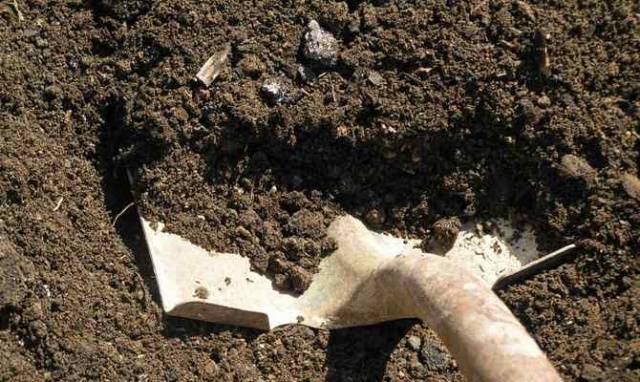
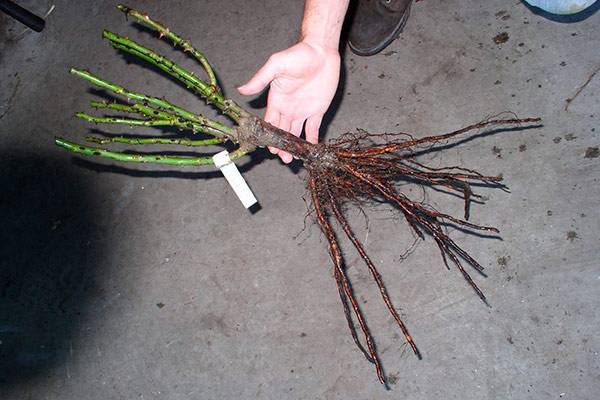

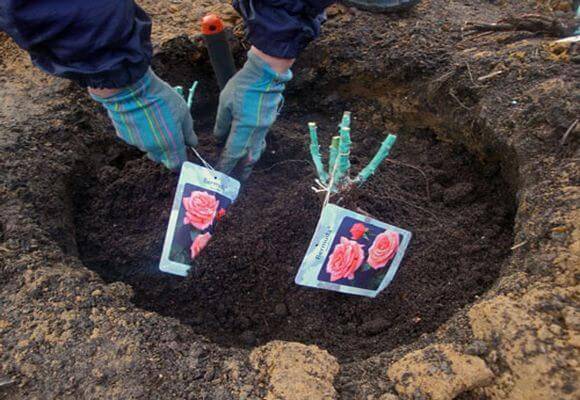
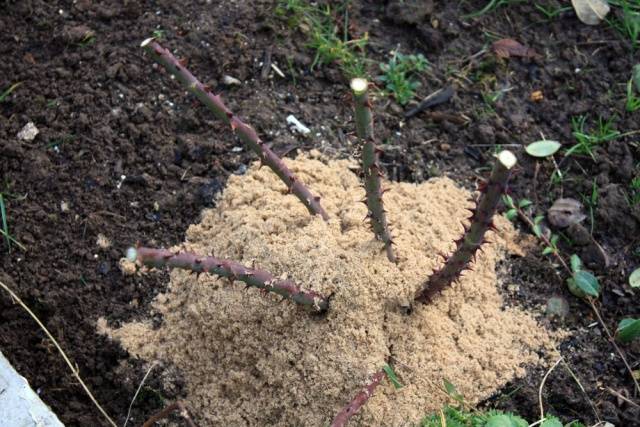
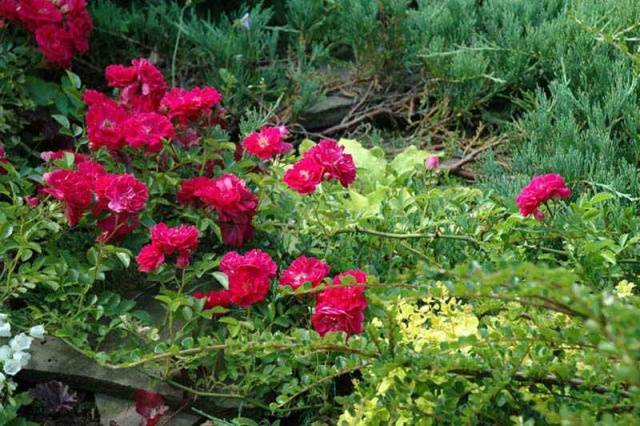

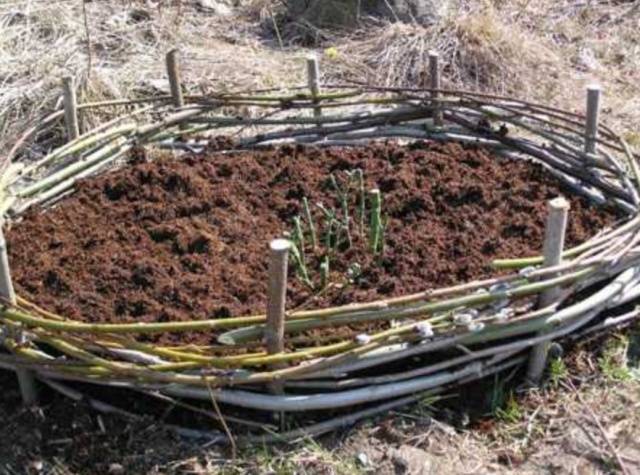
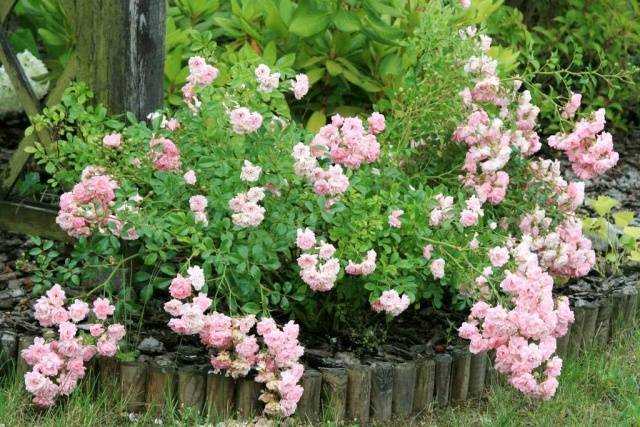
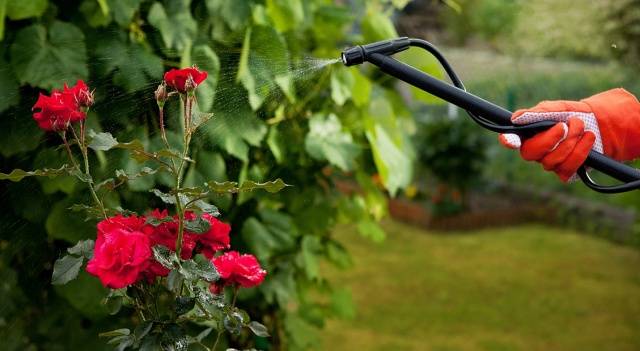




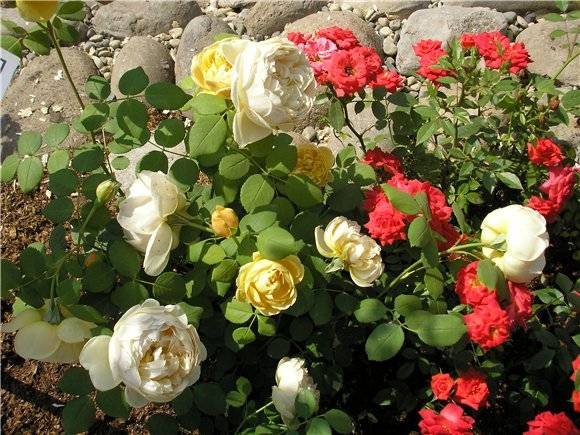









Very interesting stuff. I read it with pleasure. In the spring I will transplant my rose from a low place above. I'll try to cut it right. My white non-terry rose blooms very quickly. I will fight this. Thank!